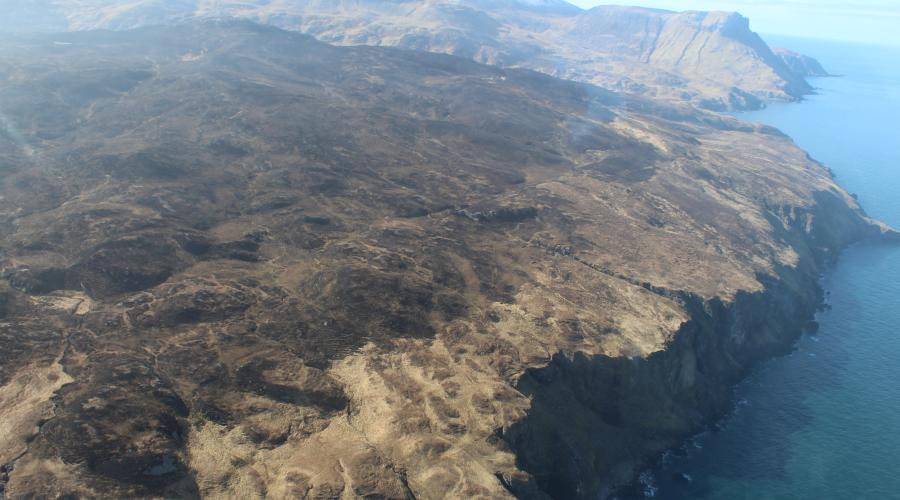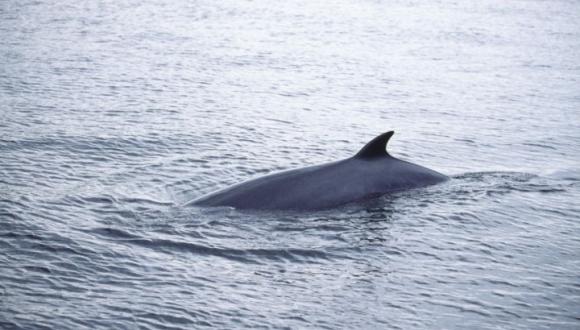
Hopeful signs of limited Rum wildfire damage
5 March 2019
A wildfire on the Isle of Rum last April has been assessed as having a low to medium impact, according to a report published by NatureScot today.
The fire, which began at about 1pm on 4 April 2018, raised concerns about the impact it would have on the habitat and animals in the area. A helicopter was deployed which slowed the spread of the fire, with the flames eventually going out during the night as temperatures dropped and some rain fell.
The report found there were mainly low to medium impacts with less than 1% of the 7km2 area suffering any high impacts. Thirty-five percent of the habitat was judged to have suffered low impact, and 58%, medium impact.
NatureScot was concerned that potential loss of habitat quality since April could affect ground-nesting birds, reptiles, mammals and insects - but so far, signs are promising. Sea eagles have continued to nest close the area of the fire, breeding of red-throated divers has been similar to other years, and other birds which are monitored regularly have shown no noticeable changes. In fact, some birds, such as merlin, had more breeding territories in 2018 than in previous years.
However, the report also found the habitats will take anywhere from 5 to 20 years to recover. Although the severity of this fire was low to medium, wildfires like this can still increase the risk of soil erosion, encourage less desirable plant species, dry out naturally wet habitats, and inhibit natural processes such as carbon storage in bogs.
NatureScot used satellite imagery and Geographic Information System (GIS) technology to determine the effect of a fire on habitat for the first time, and hopes to apply the methods that have been developed elsewhere in the future. While a ground impact assessment was also completed, satellite analysis gave more efficient and complete mapping, showing the areas that need more attention to recover.
Ian Sargent, NatureScot's South Highland reserve manager, said:
"It's good news that the habitat hasn't been affected severely. But this is certainly still a setback for efforts to improve the habitat condition, and there are areas which will take years to fully recover. This work will help us target our management to accelerate recovery, improve resilience of the habitats to fire and get this protected site in the best condition as soon as possible.
"This is also a timely reminder that we're now moving into a time of year when the risk of fire is often quite high. So we'd urge anyone visiting natural areas or conducting muirburn to take extra care."
The fire was started accidentally from a discarded cigarette that had not been entirely extinguished by a visitor to the national nature reserve.
Although procedures weren't identified as contributing to the fire in any way, NatureScot reviewed fire training and equipment, and will be posting new information on fire risks on signs in key locations and in inductions to visiting groups.






